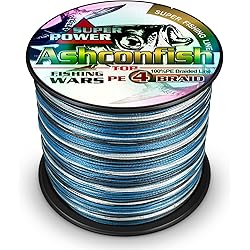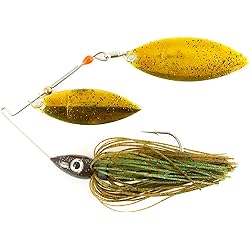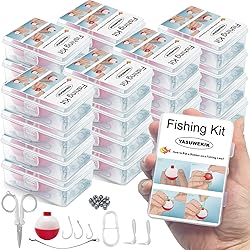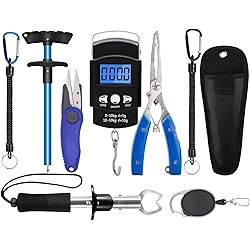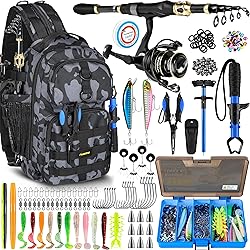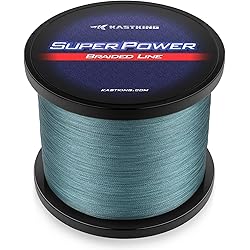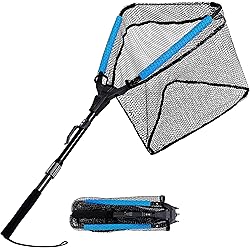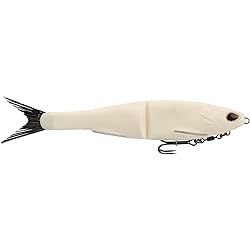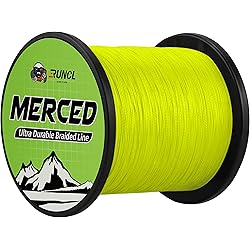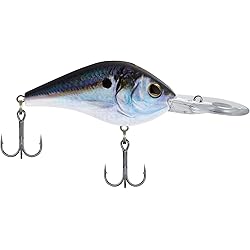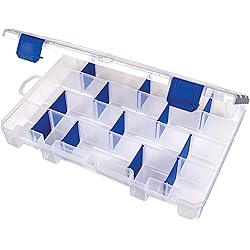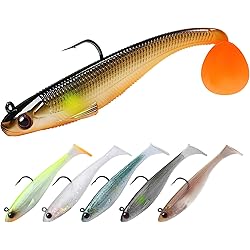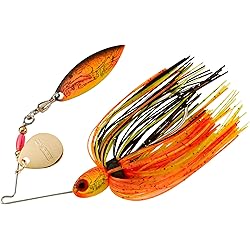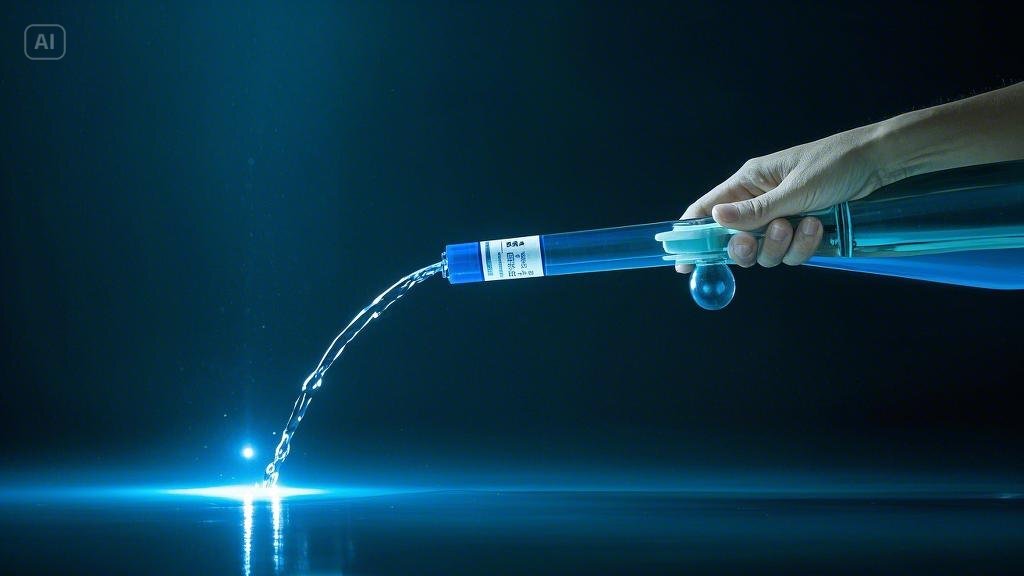How to Remove Algae from a Koi Pond In order to keep your koi fish in the best possible habitat, you must take care of any algae problems in your pond.
Fueled by an abundance of nutrients and sunlight, algae flourish in nutrient-rich water, resulting in an unattractive green tint and perhaps hazardous circumstances.
Start by using natural treatments to remove algae from your Koi pond. Introduce aquatic plants that compete with algae for nutrition, impeding their growth, such as water lilies and submerged vegetation.
It is crucial to do routine pond care, such as filter cleaning and debris removal, to stop the buildup of nutrients that feed algae.
To target suspended algae particles and enhance water clarity, think about UV sterilization.
You can maintain the ecosystem’s balance by modifying fish feeding habits and preventing overfeeding, which leads to an overabundance of nutrients.
Moreover, the deliberate positioning of elements that provide shade, such as pond covers or floating plants, can reduce solar exposure and prevent the spread of algae.
Pond Net Dome, 10×14 FT Pond Cover with 2 Doors
By implementing these strategies, you’ll not only achieve a visually appealing koi pond but also ensure the well-being and happiness of your cherished aquatic companions.
I. Introduction
Because of their peaceful atmosphere, koi ponds can make any area feel like a peaceful sanctuary.
Unfortunately, the enduring issue of algae overgrowth may distort the clarity and beauty, undermining the appeal of these water getaways.
It is critical to recognize the importance of maintaining pristine waterways.
Implementing effective strategies to combat algae, such as appropriate filtration systems and routine water testing, ensures the longevity of the ideal environment.
Upholding a delicate equilibrium creates a sanctuary where the calming influence of koi flourishes in unison with the natural world.

II. Understanding Algae in Koi Ponds
Types of Algae
All of the varieties of algae, including string algae, blue-green algae, and green water algae, pose unique threats to koi health and water purity.
To tackle these issues, a thorough knowledge of the characteristics of every kind of algae is necessary.
Targeted tactics, such as utilizing species that consume algae and modifying nutrient levels, can promote a peaceful aquatic ecosystem.
Sustaining ideal water quality protects koi’s vitality and purity, allowing them to flourish in a healthy habitat.
Impact on Water Clarity
In aquatic environments, high nitrogen levels promote the growth of algae, which darkens the water and makes it less visible.
The visual impact not only detracts from the pond’s overall attractiveness, but it also makes it challenging to monitor the koi’s health.
Nutrient management becomes crucial in order to keep an aquatic environment healthy and avoid algal blooms.
Nutrient control measures are necessary to preserve the pond’s water quality and balance and to enhance koi health monitoring.
Pond Net Dome, 10×14 FT Pond Cover with 2 Doors

III. Causes of Algae Growth
Sunlight Exposure
Overexposure to sunlight can cause unwanted algal blooms, which can upset your pond’s natural equilibrium.
Implementing efficient shade techniques that protect the body from excessive sun exposure is essential to combating this.
Creative shade strategies, such as floating coverings or well-placed flora, can greatly reduce the likelihood of algae growth.
By taking these preventative steps, you can maintain your pond’s general health and biodiversity, while also protecting its visual appeal and creating a peaceful aquatic environment.
| Causes of Algae Growth | Description |
|---|---|
| Excess Nutrients | Elevated levels of nitrogen and phosphorus from |
| runoff, fertilizers, or sewage can promote | |
| algae growth. | |
| High Water Temperature | Warmer water temperatures create favorable |
| conditions for algae to thrive and reproduce. | |
| Sunlight Exposure | Adequate sunlight is essential for photosynthesis |
| in algae, contributing to their growth. | |
| Low Water Flow | Stagnant or slow-moving water provides an |
| environment conducive to algae growth. | |
| Sediment Accumulation | Excessive sedimentation can provide nutrients |
| for algae and reduce water clarity. | |
| Industrial Discharges | Discharge of pollutants from industrial sources |
| can introduce nutrients, fueling algae growth. | |
| Stormwater Runoff | Runoff from storms carries pollutants and |
| nutrients into water bodies, promoting algae | |
| growth. | |
| Inadequate Vegetation | Lack of riparian vegetation allows more |
| nutrients to enter the water, supporting algae | |
| growth. | |
| Algal Blooms in Proximity | Presence of existing algal blooms can release |
| spores and contribute to further growth. |
Nutrient Levels
Effective prevention requires an understanding of how nutrient levels, especially phosphates and nitrates, contribute to the formation of algae.
High concentrations of these substances act as the main initiators of excessive algal growth in aquatic environments.
In order to reduce this problem, it is critical to put targeted solutions such as nutrient removal technology and sustainable farming methods into practice.
By may promote healthier water bodies, maintain a balanced ecology, and protect against the negative effects of uncorrected nutrient imbalances on water quality by addressing the underlying causes of nutrient enrichment.

IV. Choosing the Right Pond Location
Importance of Shading
Strategic shade greatly benefits sunlight exposure control, which efficiently reduces excessive solar radiation and prevents algae growth.
To gain the most shade advantages, one must understand the ideal placement choices.
By carefully positioning shade features, we can establish a balance that not only moderates solar exposure but also fosters a better aquatic habitat.
This all-encompassing strategy takes into account the wider ecological effects of shade treatments while guaranteeing the intended results in algae control.
Pond Placement
Selecting the ideal location for your pond is critical to reducing external factors that encourage algae formation.
A pond’s optimal location must take into account elements like sunlight exposure, as this has a direct impact on algae growth.
Furthermore, adequate water movement prevents stagnant situations, which prevent algae growth.
Excess garbage can be a possible source of algal nutrients; thus, placement with respect to trees and structures must be strategic.
By carefully weighing these important factors, you lay the groundwork for a pond ecosystem that deters excessive algal growth.
Pond Covers for Outdoor Ponds with 2 Zipper Doors

V. Pond Filtration Systems
Types of Filtration
Explore a wide variety of filtration systems, from mechanical marvels to biological marvels, and learn about their unique functions in effective algal management.
Mechanical filtering processes skillfully strain impurities out of water, guaranteeing pure water.
In the meantime, explore the area of biological filtration, where beneficial microorganisms proliferate and create an environment that inherently inhibits the growth of algae.
By understanding the interplay between these strategies, aquarists can create a balanced environment that achieves ideal clarity while preserving the delicate equilibrium necessary for aquatic life.
Working Mechanisms
Examine the nuances of different filtration systems to understand the vital roles they play in maintaining pure pond water.
Understanding the dynamics of these systems is critical for efficient pond maintenance. Distinguishing between mechanical, biological, and chemical filtering processes reveals the subtleties of managing water purity.
Explore the importance of every filter element, from UV sterilizers to media filters, to understand how they all work together to create a healthy aquatic ecosystem.
Learn how these elements work together to maintain water clarity and maximum pond health.

VI. Proper Pond Maintenance
Cleaning Routines
Regular cleaning is paramount for algae prevention. Discover effective cleaning routines that keep your pond in top condition.
Implementing these practices helps maintain water clarity and safeguard aquatic life. Proper maintenance involves removing debris, controlling nutrient levels, and utilizing eco-friendly products.
By incorporating these methods into your pond care regimen, you can foster a healthy aquatic environment, ensuring that your water feature remains a vibrant and enjoyable focal point in your landscape.
| Task | Details/Notes |
|---|---|
| Regular Water Quality Checks | Monitor pH, oxygen levels, and clarity. |
| Debris Removal | Remove fallen leaves, twigs, and other debris. |
| Algae Control | Use appropriate treatments to manage algae growth. |
| Fish Health Check | Observe fish behavior and address any issues. |
| Pump and Filter Inspection | Ensure proper functioning of the pond equipment. |
| Water Level Maintenance | Maintain a consistent water level. |
| Plant Care | Trim and remove dead plants as needed. |
| Winterization | Prepare the pond for winter to prevent damage. |
| Monthly Cleanups | Thoroughly clean and inspect the pond monthly. |
Nutrient Balancing
Obtaining nutritional balance is a critical part of maintaining a pond. Ideal circumstances foster a healthy aquatic environment.
To guarantee this, nutrient management becomes essential. Frequent observation aids in spotting imbalances and helps avoid problems like excessive algal development.
Biological filtration helps to keep the ecosystem in balance, and deliberate water changes help to keep everything stable.
These methods, when combined with careful maintenance of aquatic plants, result in a flourishing pond that benefits the health of the local wildlife and vegetation.

VII. Introduction to Beneficial Aquatic Plants
Natural Algae Control
Discover how aquatic plants may naturally regulate the growth of algae and promote a healthy ecology.
Utilize the benefits of thoughtful plant arrangement to create a harmonious atmosphere and provide your koi with clean, clear water.
You’ll see an incredible improvement in the quality of the water when you use environmentally friendly methods and enjoy the relationship that Koi has with aquatic plants.
Bask in the splendor of an environmentally self-sufficient setting where the lively interaction of plants and animals promotes the health of your water plants, as well as your prized koi.
Creating Balance
Learn about the variety of aquatic plants that are required to keep your pond’s ecology in balance and tranquility while efficiently suppressing algae spread.
Every kind of plant, from vivid water lilies to submerged plants that provide oxygen, is essential to promoting a symbiotic interaction with the aquatic environment.
Carefully arranging these essential plant components can maximize water quality and create an eye-catching pond.
Take in the splendor of nature with a well-maintained pond that grows from the mutual support of its occupants and well-chosen plants.

VIII. Algaecides: Pros and Cons
Chemical Solutions
Algaecides provide a quick fix for algae problems, but it’s still important to weigh the advantages and hazards.
Carefully weigh the advantages and disadvantages before using pharmaceutical treatments.
It is critical to carefully consider the possible effects on human health and aquatic ecology.
Making educated judgments on the application of algaecides in aquatic settings requires striking a balance between short- and long-term effects.
Risks Involved
Learn about the possible dangers associated with algaecides and make plans to reduce them so that your beloved koi will remain healthy.
Understanding the ecological effects of algaecides is crucial because some formulations have the potential to wipe out aquatic life.
Use algaecides made especially for use in ponds to protect your koi and reduce the possibility of poisoning.
Monitor the quality of your water and adhere to recommended dosages to prevent adverse effects.
By being knowledgeable and taking precautions, you can provide your pet koi with a peaceful aquatic habitat.
How to Remove Algae from a Koi Pond

IX. Natural Remedies for Algae Removal
Barley Straw
Discover the beneficial attributes of barley straw in combating algae naturally. Explore its algae-fighting potency and gain insights into employing it with efficacy.
Uncover the secrets of utilizing barley straw to maintain a clear and balanced aquatic environment.
Delve into the realm of natural solutions for algae control and grasp the methods to harness barley straw’s unique properties for a healthier and more vibrant water ecosystem.
| Method | Description |
|---|---|
| 1. Physical Removal | Use a net to manually remove algae from the pond’s surface. |
| 2. Beneficial Plants | Introduce oxygenating plants like Anacharis to outcompete algae. |
| 3. UV Sterilizers | Install UV sterilizers to kill algae cells and prevent growth. |
| 4. Barley Straw | Place barley straw in the pond, as it releases compounds inhibiting algae. |
| 5. Pond Aeration | Increase aeration to maintain proper oxygen levels and deter algae. |
| 6. Chemical Treatments | Use algae-killing chemicals cautiously and as a last resort. |
| 7. Regular Maintenance | Perform routine pond cleaning to prevent excessive nutrient buildup. |
| 8. Shade | Provide shade using plants or structures to limit sunlight, reducing algae growth. |
| 9. Pond Filtration | Install effective filtration systems to remove algae-promoting nutrients. |
| 10. Fish Management | Avoid overfeeding fish, as excess food contributes to nutrient levels in the pond. |
DIY Methods
Find creative, environmentally responsible ways to manage algae with everyday home objects.
Baking soda and vinegar are examples of natural therapies that work well in place of pharmaceutical interventions.
Adopt a sustainable strategy to address the problem of algae, encouraging a more salubrious habitat for aquatic ecosystems.
Together with solving the issue, these do-it-yourself methods support a more sustainable and well-balanced ecosystem, which is in line with the increasing recognition of the value of environmental stewardship.
Pond Covers for Outdoor Ponds with 2 Zipper Doors

X. Monitoring and Testing Pond Water
Importance of Testing
Testing the water on a regular basis is a proactive way to find any algae problems before they get serious.
Using thorough testing techniques, it is possible to identify high nutrient levels and early indications of an algal bloom, allowing for prompt action.
Close monitoring of crucial factors like bacterial counts, nutrient content, and water quality enables accurate evaluation.
Establishing a regular testing schedule enables people to protect the ecosystem and stop the negative effects of uncontrolled algae development.
Signs to Watch For
To ensure prompt action, quickly identify the early signs of algae problems. Take preventative measures to keep water transparent.
Precautionary actions, such as deploying algaecides and modifying nutrient levels, help protect against future outbreaks.
Maintaining the best possible water quality requires constant observation and prompt intervention.
For an aquatic environment that is constantly clean and healthy, be alert and take swift action to alleviate algal issues.

XI. Professional Assistance
When to Seek Help
When to seek expert treatment for algae overgrowth depends on your ability to recognize its symptoms.
Algal problems that don’t go away frequently indicate an underlying condition that requires expert attention.
Speaking with aquatics specialists ensures a focused strategy that addresses the underlying issues and implements workable solutions.
Their knowledge extends beyond common fixes and provides a thorough plan for long-term algae control.
You can keep the aquatic environment healthy and balanced by recognizing the value of prompt expert participation.
Services Offered
Explore the diverse services provided by pond maintenance experts for optimal algae control.
These skilled professionals employ cutting-edge techniques and advanced equipment to maintain a healthy pond ecosystem.
From routine water testing to strategic plant placement, their services encompass a holistic approach to mitigating algae growth. With a commitment to eco-friendly solutions, these experts deliver sustainable pond management,

XII. Success Stories
Overcoming Algae Challenges
Explore compelling aquatic tales from successful Koi pond enthusiasts who conquered persistent algae issues, acquiring crucial wisdom for effective pond administration.
Immerse yourself in their experiences to refine your strategy and overcome potential hurdles, ensuring a flourishing aquatic haven.
Delve into the world of resilient pond keepers and glean essential tips to cultivate a thriving, algae-free environment for your cherished Koi companions.
Lessons Learned
Learn from the successes and challenges of fellow pond enthusiasts to refine your approach to pond maintenance.
Leverage their insights to develop a more effective strategy for achieving and sustaining a pristine water environment.
Embrace the wisdom gained from others’ experiences to overcome potential obstacles and implement innovative solutions.
By incorporating a diverse range of learnings, you can elevate your pond care practices and ensure a thriving aquatic ecosystem.

XIII. Koi Health and Algae-Free Environments
Water Quality Connection
Recognizing the inherent link between water quality and koi health is crucial. Prioritize practices that enhance aquatic conditions, ensuring your fish thrive.
Integrate efficient filtration systems and regular water testing to maintain optimal conditions.
By adopting these measures, you create a haven for your koi, promoting their well-being and longevity.
Consistent monitoring and proactive interventions are key to a flourishing aquatic environment for your cherished companions.
| Koi Health | Algae-Free Environments |
|---|---|
| 1. Balanced Diet | 1. Adequate Filtration |
| Ensure koi receive a | Install a reliable |
| nutritionally balanced | filtration system to |
| diet to support their | remove excess nutrients |
| immune system. | and prevent algae growth. |
| ————————— | ————————— |
| 2. Regular Health Checks | 2. Proper Aeration |
| Schedule routine health | Maintain proper aeration |
| checks to monitor for | to ensure oxygen levels |
| signs of illness or | are sufficient. |
| parasites. | |
| ————————— | ————————— |
| 3. Quarantine Procedures | 3. Sunlight Management |
| Quarantine new koi | Control sunlight exposure |
| arrivals to prevent the | to the pond, as excessive |
| spread of diseases. | sunlight can promote algae |
| ————————— | ————————— |
| 4. Temperature Control | 4. Regular Cleaning |
| Maintain appropriate | Clean the pond regularly |
| water temperature to | to remove debris and |
| prevent stress-related | organic matter that can |
| illnesses. | contribute to algae growth |
| ————————— | ————————— |
| 5. Medication as Needed | 5. Algaecide Application |
| Use medications when | If algae problems persist, |
| necessary to treat | consider using algaecides |
| specific health issues. | under professional advice. |
| ————————— | ————————— |
| 6. Hygiene and Biosecurity | 6. Avoid Overfeeding |
| Practice good hygiene, | Overfeeding can lead to |
| and implement biosecurity | excess nutrients in the |
| measures to minimize the | water, fueling algae |
| risk of diseases. | growth. |
| ————————— | ————————— |
Tips for Well-Being
Recognizing the inherent link between water quality and koi health is crucial. Prioritize practices that enhance aquatic conditions, ensuring your fish thrive.
Integrate efficient filtration systems and regular water testing to maintain optimal conditions.
By adopting these measures, you create a haven for your koi, promoting their well-being and longevity.
Consistent monitoring and proactive interventions are key to a flourishing aquatic environment for your cherished companions.

XIV. Tips for Long-Term Algae Prevention
Sustainable Practices
Adopting environmentally friendly practices, such as adequate aeration and routine nutrient level monitoring, helps maintain a balanced aquatic environment and inhibits excessive algal development.
Natural algae inhibitors like barley straw or beneficial microorganisms enhance the pond’s resistance.
Using proactive measures, such as minimizing fertilizer runoff and maintaining proper pH levels, ensures sustained effectiveness in algae prevention.
These all-encompassing methods will help you cultivate a pond environment that is robust and long-lived.
Ongoing Maintenance
Examine the importance of consistent effort in maintaining a bacterial-free environment that is essential for your pond’s long-term health.
Maintaining an algal-free ecosystem necessitates ongoing efforts to ensure the long-term health of aquatic life.
Maintaining a healthy environment requires regular maintenance procedures, including enough filtration and aeration.
Take responsibility for maintaining your pond and restoring the delicate balance required for the long-term health of its diverse aquatic life.

XV. Conclusion
To sum up, maintaining clean waters in your koi pond is not just a visual goal; it is also an essential component of ensuring the health and happiness of your aquatic friends.
By implementing the suggested techniques, you can create a setting that is visually appealing while also supporting a healthy and vibrant population of koi fish.
FAQs
How often should I clean my Koi pond to prevent algae growth?
Regular cleaning every two weeks is recommended to maintain optimal pond conditions and prevent algae.
Are there specific koi-friendly plants that help control algae?
Yes, plants like water lilies, hornwort, and parrot feather can contribute to natural algae control.
Can algae growth affect the oxygen levels in my pond?
Yes, excessive algae growth can deplete oxygen levels, posing a threat to the health of your koi.
Do I need professional help if I notice algae in my pond?
If algae issues persist despite your efforts, seeking professional assistance is advisable to address the underlying problems.
Can I use algaecides without harming my koi?
While algaecides can be effective, cautious use and adherence to recommended doses are crucial to avoid harm to koi.
Hooked on Tech: Exploring the latest Fishing Gadgets that Anglers swear by.
In the realm of angling, where tradition and technology often converge, a new wave of fishing gadgets has emerged, transforming the way anglers approach their craft.
From advanced fish finders to smart bait systems, these innovations have not only revolutionized the fishing experience but have also garnered a loyal following among anglers worldwide.



